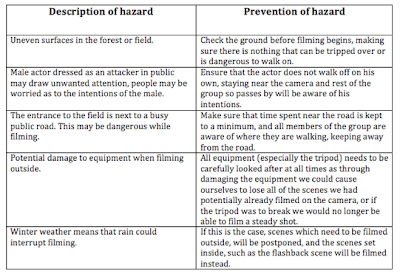Group storyboards
Once we had written our group narrative, myself and Amy designed the group storyboards. By drawing out the narrative scene by scene, we were able to plan how we would like the different events to appear and be presented to the audience, what close up shots we would use, and where the different flashbacks should be shown. We were also able to decide how long we would like each scene to last for, in order to ensure that the opening sequence didn't run longer than we needed it to, two or three minutes at the most.
In order to form our group narrative, and then draw out our group storyboards, we had a group discussion about the ideas and scenes we each felt were most important to include. This meant that we were able to use the best ideas from every member of the group to make our narrative as effective as possible. Once we had discussed these ideas in detail, myself and Amy spent time putting them together in chronological order, making sure that the scenes made sense where we had placed them, in terms of the whole narrative.
Our storyboards then took on the role of a plan for us, while we shot the scenes, enabling us to ensure that we had included everything that we needed to. We did however, make some changes to the order of the scenes within these storyboards during editing, as we realised that different scenes worked better together than others.
In order to form our group narrative, and then draw out our group storyboards, we had a group discussion about the ideas and scenes we each felt were most important to include. This meant that we were able to use the best ideas from every member of the group to make our narrative as effective as possible. Once we had discussed these ideas in detail, myself and Amy spent time putting them together in chronological order, making sure that the scenes made sense where we had placed them, in terms of the whole narrative.
Our storyboards then took on the role of a plan for us, while we shot the scenes, enabling us to ensure that we had included everything that we needed to. We did however, make some changes to the order of the scenes within these storyboards during editing, as we realised that different scenes worked better together than others.













